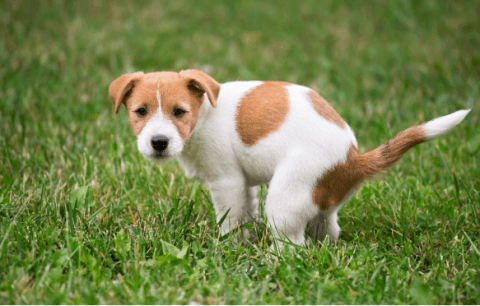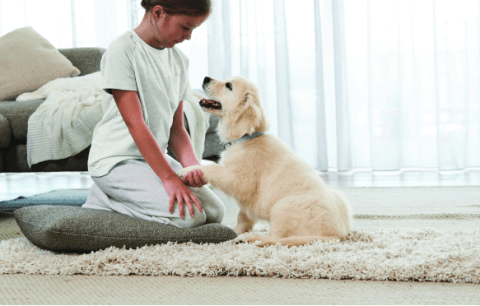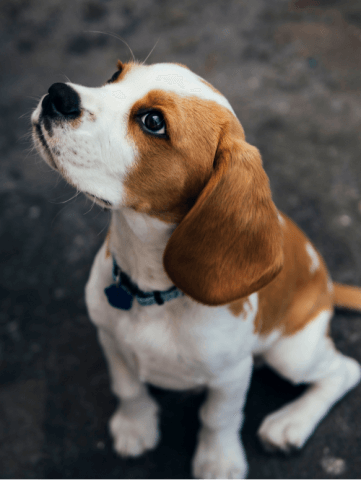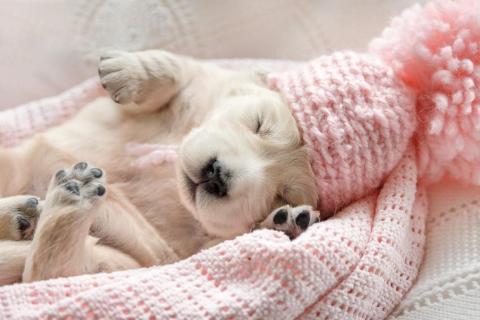Would you like to read more about dog training?
Click here for our dog training guide, filled with helpful suggestions to get you started.



A good owner is always looking for the best ways to look after their puppy. When house-training, there are some gentle, effective methods to try, including:
Click here for our dog training guide, filled with helpful suggestions to get you started.



What is the quickest way to house train a puppy?
When it comes time to house training puppies, each dog will be different. In fact, the average time to house-train a puppy can be from a few weeks to between four and six months. If you’re looking for the best and quickest way to house-train a puppy, you must set them up for success. As your puppy normally relieves themselves when the need strikes, take them outside every two hours until they have finished their business and associate the act with a specific spot. Introduce your cues during the process and progressively create a schedule for when they wake up, after meals, and before bed. If you are house-training a puppy when you work, you can use the puppy training pads until you get home.
How to house train a puppy in 5 days?
It's a tall order to fully house-train puppies in just five days, but you can establish solid groundwork by tapping into their instincts, particularly to do their business in a location far away from where they sleep. Consistency is key here, so if you can, attempt this over a weekend and take some time away from work or other responsibilities. You can then follow these steps:
1. Preparation: Dedicate 5 days for continuous supervision, equipping yourself with treats, puppy pads, a leash and anything else you might need.
2. Reinforcement: Applaud outdoor bathroom use with praise and treats. If accidents happen indoors, swiftly relocate the puppy outdoors without admonishing them.
3. Confinement: Use their crate or bed for sleeping and absence periods (surrounded by puppy pads), but immediately post-wake or return, escort the puppy outside.
4. Scheduling: Employ reminders and verbal cues to ensure regular outdoor visits, especially early morning and before bed.
5. Monitoring: Observe closely for telltale signs like floor-sniffing, signalling an immediate need for an outdoor trip. Limit feeding and drinking a couple of hours before bedtime to aid in overnight control.
While challenging, this approach fosters quick bonding and efficient puppy house training. Remember, whenever you are trying to train your dog, patience and understanding is vital to achieve lasting results.
At what age should a puppy be house trained?
Puppy house training can start as soon as you bring them home – add it to your new puppy checklist!
Remember that this process demands time and patience, so it is important not to rush your puppy as they adjust to their new environment. Don’t expect overnight results; instead, give them the routine, tools and care they need to feel comfortable in their new home and progress at their own pace.
If you are having trouble finding the best way to house-train your puppy, despite a positive and consistent approach, it is best to speak to your vet to rule out underlying medical issues.
RELATED ARTICLES
House training or toilet training a puppy can be a challenging task. NexGard has a guide that can help with toilet training your puppy. Click here to learn more.


Wondering what you need for your new puppy? NexGard provides the ultimate new puppy checklist that will give your pup the best start. Learn more with NexGard.


Bringing a puppy home for the first time is one of the most exciting times for any family. That being said, the art of raising a puppy is not a simple one!
Copyright and Trademark Notice
NEXGARD SPECTRA®, NEXGARD®, HEARTGARD30® and PARAGARD® are registered trademarks of the Boehringer Ingelheim Group.
©2021-2023 Boehringer Ingelheim Animal Health Australia Pty. Ltd. All rights reserved. PET-0228-2022 PET-0203-2023